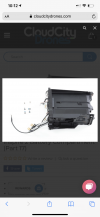- Joined
- Feb 4, 2017
- Messages
- 14
- Reaction score
- 7
- Location
- Sankt Moritz, Switzerland
- Website
- www.heliengadin.com
Interesting, is the Koptermax battery a DJI manufactured piece? Is that a I1 top or a Koptermax top? If a I1 top, did the Koptermax circuit board work with I1?
Hello everybody,
the KopterMax TB48K is made from an old DJI TB48 that is either exhausted, not performing well, with swollen cells or even not powering up at all.
The original circuit board is preserved, and brand new, high performance cells are installed.
In our laboratory here in Switzerland we do also perform a full recalibration for maximizing capacity and flight time.
The cycle counter is not resetted, to prevent possible issues with the energy gauging; instead, the old cycle count is reported on the battery side and in the provided test reports, and it can be deducted from the total cycle count in the DJI GO app to get the actual cycles on the new cells.
Any ballpark on price for the TB48K?
At the moment price is 229€ without VAT.
The most expensive part is actually manufacturing of the cells and the labour involved in the regeneration process.
We do discount up to 40€ if you provide your own battery to recycle.
We also trade in your old TB48 if you want to dispose them.
After all, it is a terrible e-waste throwing them away in the dumpster when they can be recycled...







